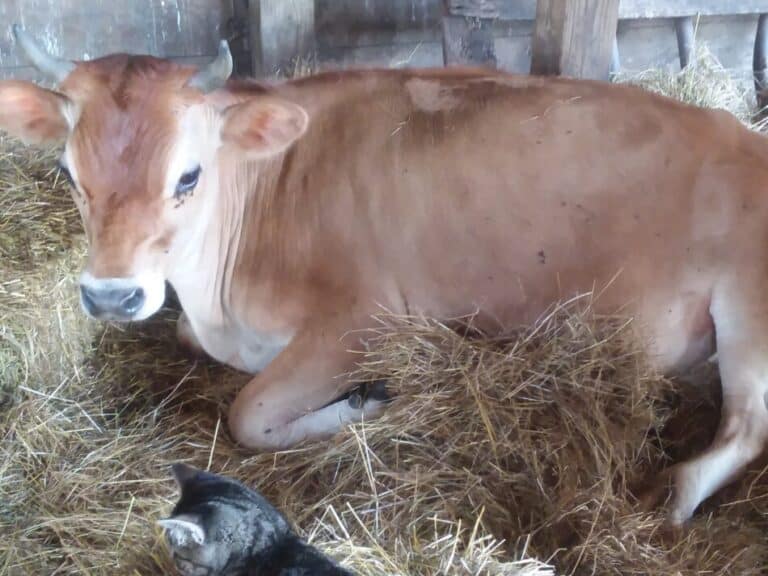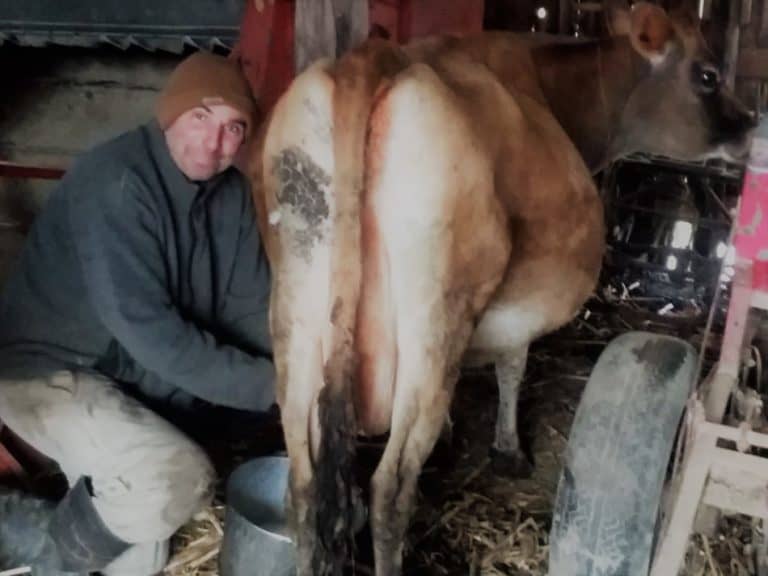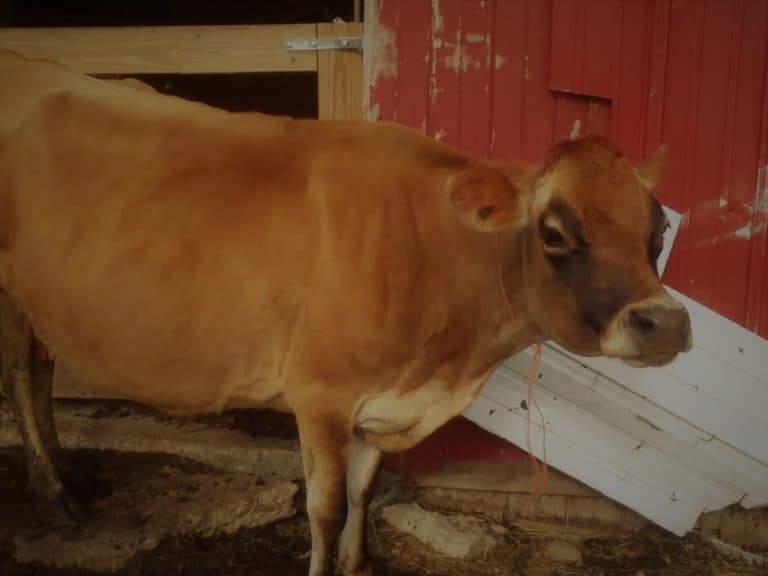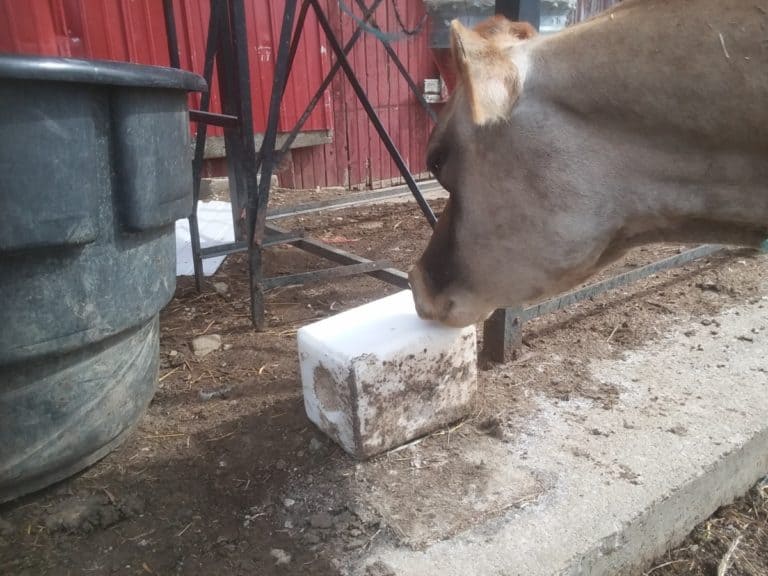Your Family Cow: Amount Of Manure And What To Do With It!

One thing is for sure, your cow will be producing manure! Manure is chock full of nutrients and biology, it’s black gold, really.
Your cow’s manure is good stuff! How much manure will you get per day and what are your options for using it?
Your family cow will produce between 82-115 pounds of manure each day, depending upon her breed and body weight. Manure in the field will help nourish the pasture, manure in the barn can be captured with bedding and be composted.
Black gold is actually manure. Give that a thought and consider the possibilities! What else can rejuvenate soils, even completely bankrupt, hopeless looking areas?
Add cattle, movement and rest/regrowth times and near miracles can happen. All because of manure!
Using Grass To Feed Your Herd gives you ideas on how to manage your forage with your cattle.
Maybe you were thinking it’s just poop? Not at all! Your cow is a wonderful producer of one of the best natural fertilizers and soil revitalizing substances around!
If you’ve never thought of manure as an amazing resource before you may think I’m full of, well, manure!
Here’s some proof: Check out Allan Savory, Joel Salatin, Greg Judy and Gabe Brown in my People You Should Know section, prepare to be impressed with their work and ideas!
Your cow makes 82 pounds of manure per day
| Body weight | Dairy Cattle Example | Manure per day |
| 150 pounds | Jersey: Weaned calf Holstein: Big bottle calf | 12 pounds |
| 250 pounds | Jersey: Older heifer Holstein: Weaned heifer | 20 pounds |
| 500 pounds | Jersey: Yearling heifer Holstein: Older heifer | 41 pounds |
| 1000 pounds | Jersey: Cow Holstein: Yearling heifer | 82 pounds |
| 1400 pounds | Holstein: Cow | 115 pounds |
The numbers in the table above came from this article Energy Aspects Of Manure Management from the University Of Illinois Extension written by David B. Fischer.
Keep in mind that cow manure is wet, therefore heavy for it’s volume. As the manure dries during composting or out in the sun, it will naturally lose weight.
How do you know if you’re ready? My guide “Are You Ready For A Family Cow?” will walk you through the things you need to have figured out, including feeding needs and daily care, before you get your cow.
Family Cow Daily Care goes over the things you’ll need to do, everyday, including bedding maintenance to keep your both you and your cow happy.
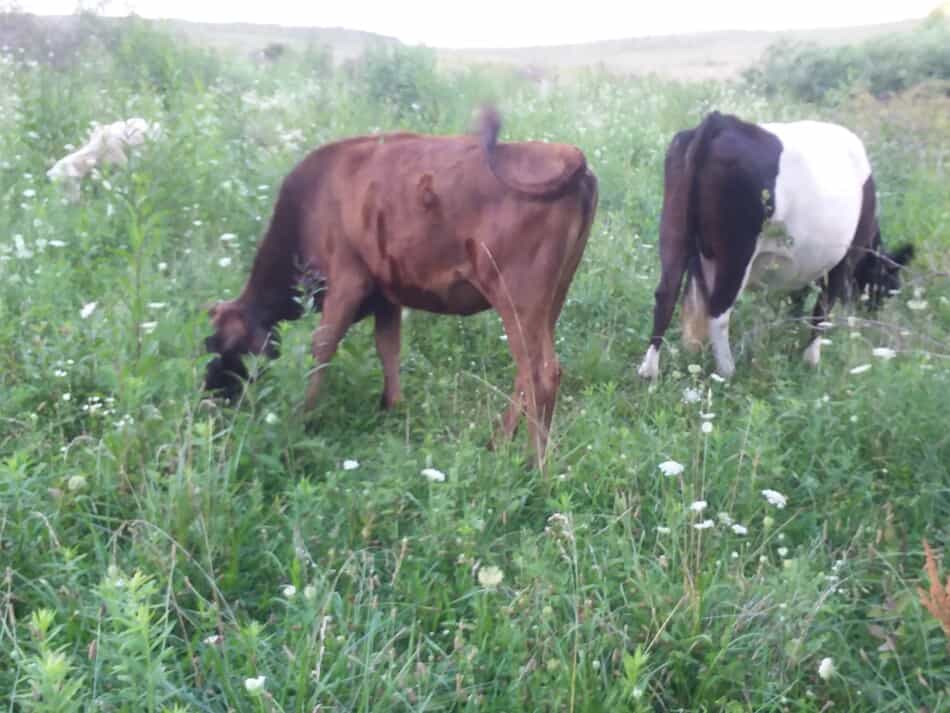
Bigger cows make more manure
The biggest variable in manure is directly related to the weight of the cow. The bigger the cow the more manure you will get per day from her.
If you are comparing two mature dairy cows, the smaller bodied cow will weigh less and produce less manure per day than her larger bodied peer.
There will be a slight variation in the consistency of the manure when your cow is on lush pasture, like in the spring when the grass has more moisture in it.
Higher moisture grass will make higher moisture manure.
Normal manure looks like pudding
A cow pie from a healthy cow looks like pudding. Usually with a dent in the top where the last little bit dropped down.
Why are we talking about this? Because for people with cattle, manure is appropriate conversation anytime, especially at dinner and parties! Just kidding, of course!
Seriously, the consistency of the manure gives a bit of insight into the current health of the cow’s digestive system and so you know what you’ll be pitching out.
Note: dispite what you may read in commercial dairy farming focused information, manure is not liquid, unless of course they are referring to urine.
Manure is very manageable on a small farm scale, as long as you use bedding!
Compost that cow manure
First off, keep all of the nutrients that your cow gave you!
And how do you do that? Letting the cow handle ideal poop placement for you, on the pasture.
The best place for manure is on the pasture the cow is eating.
The life in the soil will start to use that manure pile, if it is plopped onto your soil to start with.
For the times of the year when having your cow on pasture is not good for her or the pasture, we have to do a bit more work to keep those nutrients.
How? With plenty of bedding! Use any bedding material you choose, straw, old hay, sawdust, wood chips, etc. to lock in the nutrients in the manure.
First step, keep the nutrients on your farm
How do you know you’re keeping the manure nutrients and not losing them (run off or evaporation) to the environment? Smell, it’s that simple.
If you can smell poo, you are losing some of the value of your main fertility source.
If you smell manure, add bedding.
How can you tell if you have enough bedding? Another easy answer, try it out yourself.
Put a knee down on the bedding and see how your pants look and feel.
Knees of your pants dry? Bedding is in great shape. Knees of your pants stained? Add more bedding!
You are making a pack, like a diaper, that locks in the value of the manure.
The way the pack works is with significantly more bedding than manure, to keep her stall in great shape add bedding materials as needed.
You can mix up the bedding used!
We know multiple dairy farmers who like to use a variety of bedding materials along with long stemmed straw, to make cleaning out the pen easier.
Long fibers tend to hold together, like a carpet. Shorter pieces, like chopped straw or sawdust, pull apart more easily.
Second step, compost the manure
Make a pile in an out of the way area for composting the manure.
If the pile has plenty of carbon, that’s the bedding part, it will compost down in 90 days or so in warm weather.
Turning the pile will make it go faster, but is also more work!
You’ll know your compost is done when you grab a handful of rich, crumbly and dark used to be manure and not it does not smell like manure anymore! It smells like soil.
Congratulations, you just made compost!
Get the pigs to help you with compost
If you have the option, pigs will turn your cow stall into compost, given the chance. This would mean having a second place for the cow, pigs don’t share well!
If you can make it work, pigs will loosen up all of the bedding making cleaning out the stall easier for you!
Larger pigs, closer to 200 pounds are needed for serious rooting, but even feeder pigs will flip around the bedding.
We have some pigs in an area that had sheep last winter. The pigs are rooting through the bedding and it looks like some really nice stuff now.
The pack is a few feet deep and it took waiting until the pigs reached that 200 pound size or so for serious rooting to start.
They are dedicated compost turners now!
Other animals love cow manure
If you have other animals, especially poultry or pigs, don’t leave them out of the fun or the nutritional opportunity of cow manure.
Your egg laying chickens, ducks and broilers all love cow pies. So do your pigs!
For any animal that is not a ruminant, picking around through cow manure gives them the opportunity to harvest vitamins and probiotics that they can not make themselves. Think of it like yogurt!
If you are having trouble wrapping your mind around this chickens eating poop thing, take a few minutes and just watch your chickens.
You’ll notice they do all kinds of things that you wouldn’t do or think to do.
The eating manure thing is just a chicken being a chicken. To them it’s not gross, it’s a new exciting snack!
Capture manure: bedding options
The main options for bedding your cow will be straw and sawdust. There are some larger dairy farms that use sand, as well, but we’ll stick with the first two.
Straw for manure management
Using straw is a great option for you if you can get it for a good price in your area.
Lately in our area, the price of straw, especially good straw has gone up. Sometimes, the straw is bringing more per bale than hay!
Many grain farmers are leaving the straw on the field, (straw is the dried stalk left after harvesting small grains like wheat or barley) instead of baling and selling it.
The reasons are sound, straw is a source of organic matter and selling the straw removes organic matter from the field.
You can find two options of straw, the normal full length straw and chopped.
Chopped is easier to spread out but will fall apart as soon as you open the bale.
Normal straw is in flakes for easy handling, but will held together in the pack, making it a challenge to completely clean out the stall.
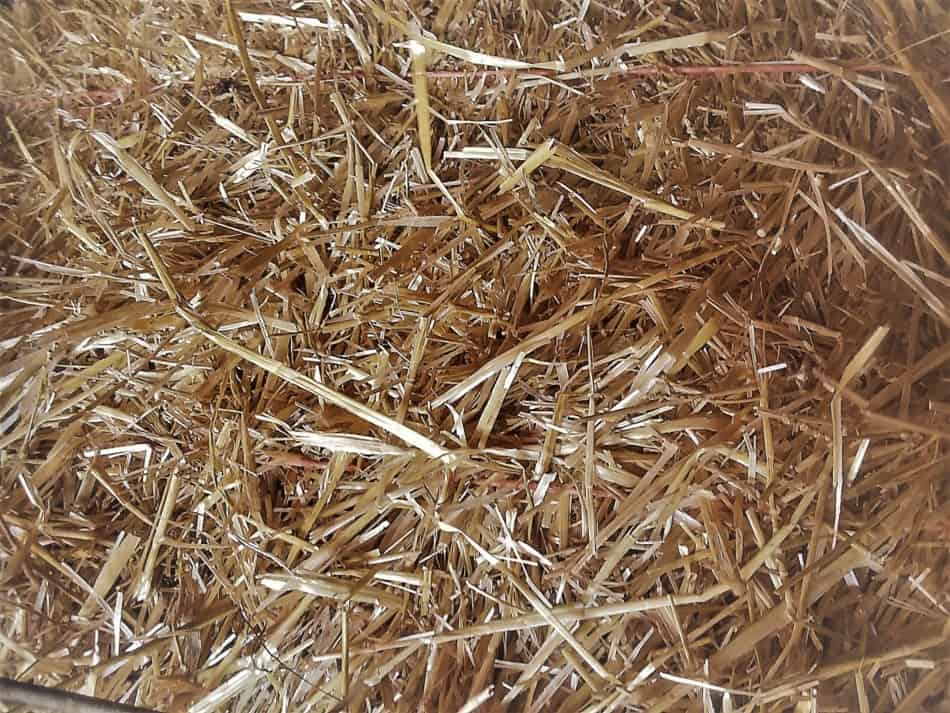
Sawdust and wood chips as bedding
I have noticed sawdust and wood chips increasing in popularity for use as bedding, even for larger animals like cattle.
There is no denying that a pile of poo can be easily removed from your cow’s stall with a close tined fork when you use sawdust.
You can take the manure and the soiled bedding only, leaving the clean sawdust in the stall. That saves you bedding materials in the stall.
However, be aware that mostly manure and very little carbon material, the sawdust in this case, will not compost it will just sit there.
For the compost pile to work, it needs more carbon than that. The carbon materials keep air spaces open in the pile so the aerobic bacteria you want can work in there.
Just poo in the pile and not only are you loosing nutrients, it will stink, so you can tell you will not be composting.
No air =anaerobic bacteria=smelly pile of nutrient losing manure, a wasted resource, not the soon to be incredibly useful composting manure that you wanted.
Using Hay For Bedding gives you some ideas on using not so great hay as bedding. We do this all the time!
How do you know if you’re ready? My guide “Are You Ready For A Family Cow?” will walk you through the things you need to have figured out, including feeding needs and daily care, before you get your cow.
There are challenges with cow manure
One of the biggest challenges of manure is keeping it under control, especially in challenging weather or times when you are short on bedding.
Both of these potential problems can be solved with planning.
Manure challenge: weather conditions
In the crazy wet weather of early spring, how are you getting your manure to the composting area?
What’s the plan for when the snow drifts make using the wheelbarrow to make the trip to the compost pile nearly impossible?
Have a plan to deal with the less than ideal situations that real life sends us occasionally.
Manure challenge: Point Of View
The main challenge I find is for people to change their thinking around to viewing manure as a valuable resource, not a pain in the behind.
Once you consider how much you and your land can gain by securing all of the benefits of the manure your cow is giving you, it’s easier to value the planning and preparation to make keeping the manure work for you.
The second challenge I feel regarding manure is the impatience I feel when I could use some homemade compost now, but it’s not ready for a while yet!
These are natural processes that take time, the biologically appropriate amount of time. Even though I know this, I still need to remind myself to respect the process and have patience!
This is another instance when doing some planning will help keep things on track.
Chart this out on your calendar, if you want to use finished compost in May that pile needs to be made and fully functioning, actually composting in late January or early February.
At least in my area, that’s not likely to happen, it’s too cold.
I would need to be planning ahead to have a compost pile done by winter of the year before to use it in the garden in spring.
How do you know if you’re ready? My guide “Are You Ready For A Family Cow?” will walk you through the things you need to have figured out, including feeding needs and daily care, before you get your cow.

